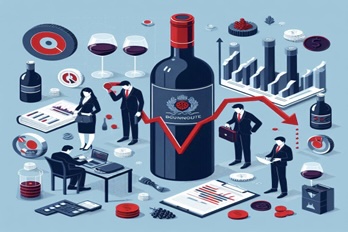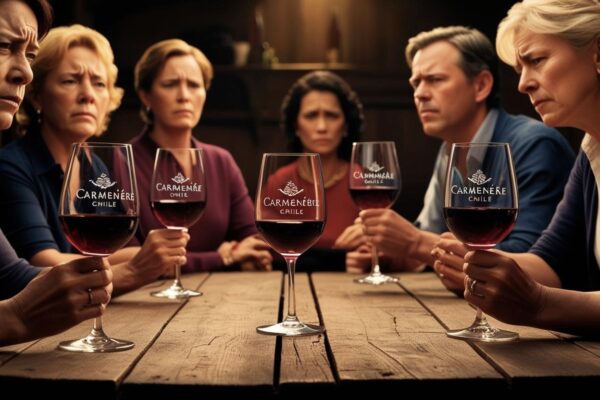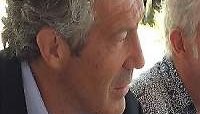Bordeaux winemakers might know that fresh marketing strategies are crucial for reclaiming their market share; however, new directions haven’t emerged – yet. A recent wine trade event in Manhattan highlighted this traditional viewpoint using the same format that’s been used for decades.
Imagine hundreds—perhaps thousands—of wine buyers, sellers, sommeliers, educators, and writers, all jostling to reach a winemaker’s table. Each person desperately tries to get a sip, share a brief conversation with the person pouring the wines, only to be elbowed out of the way by someone else eager for a taste.
New and Relevant
New pathways are necessary for marketing Bordeaux wines. It is true that large and massive events bring together a diverse group of industry professionals and provide a platform for vineyard exposure. International events like VinItaly and Paris Vinexpo attract thousands of visitors and exhibitors from around the world, offering space for winemakers to expand their distribution and gain international recognition. These events also provide a space for industry professionals to exchange ideas, learn about new trends, and foster lasting connections. This exposure does not come cheaply.
Winemakers participating in these events experience expenses that include:
- Booth Fees: The cost of renting a booth can range from approximately $1,040 to $10,400 depending on the size and location within the event.
- Additional Costs: There are added costs for stand furniture, lighting, electricity, and other services, which can add up to several thousands of dollars.
- Travel and Accommodation: Winemakers also need to factor in travel expenses, accommodations, and daily expenses for staff attending the event.
- Overall Investment: For a major event like ProWein in Düsseldorf, Germany, the total cost, including booth fees, travel, and other expenses, can easily exceed approximately $10,400 for a small stand.
While these costs can be substantial, especially for smaller winemakers, the potential benefits of networking, brand exposure, and sales opportunities often justify the investment.
Beyond the Trade Show
To enhance brand recognition, winemakers should look beyond wine trade events. Labels must be visually appealing and comply with regulations by including health warnings, calorie counts, and alcohol content, with some producers adding nutritional details for transparency.
Highlighting potential health benefits of moderate wine consumption, while addressing alcohol risks, can support brand messaging. Sustainability is key, with innovations such as lower-alcohol wines, non-alcoholic options, and environmentally friendly practices appealing to health-conscious consumers. Experimenting with grape blends and fermentation techniques can further refine products. Educational campaigns promoting moderation and partnerships with health organizations, coupled with the power of social media, can strengthen consumer connections.
Strength of Social Media
To elevate Bordeaux wines’ global presence, tailor content to each platform. On Instagram, showcase stunning visuals of vineyards, winemaking, and food pairings with engaging video clips. Facebook can foster community with groups, wine-tasting events, and targeted ads. TikTok thrives on fun, relatable content like pairing tips and humorous skits, while YouTube suits in-depth guides, vineyard tours, and collaborations with creators. Use Twitter/X for real-time conversations and quick updates, LinkedIn for industry insights and B2B outreach, and Pinterest for inspiring boards on pairings, recipes, and travel. Enhance impact with geo-targeted ads, seasonal promotions, and analytics to refine strategies and connect with wine enthusiasts worldwide.
InMyPersonalOpinion.Life
Chateau Maucaillou
Château Maucaillou traces its origins back to 1875. Today it is managed by Jean-Jacques Dourthe. Located in the Moulis-en-Médoc appellation of Bordeaux, this estate is renowned for producing wines that embody the elegance and complexity of the Médoc region.
The name “Maucaillou,” translates to “bad pebbles,” refers to the gravelly soils that characterize the 45 hectares vineyard. Despite the name, these soils are particularly well-suited for viticulture, providing excellent drainage and ideal growing conditions for Bordeaux varietals, particularly Cabernet Sauvignon, Merlot, and Petit Verdot.
Grape Varieties:
- Cabernet Sauvignon (55%): Provides structure, tannins, and aging potential.
- Merlot (35%): Contributes fruitiness and roundness to the wine.
- Petit Verdot (10%): Adds complexity and depth, as well as vibrant color.
- Fermentation takes place in temperature-controlled stainless-steel vats to retain the freshness and purity of the fruit. The wine is then aged in French oak barrels (a mix of new and used barrels) for around 12 months to develop complexity.
Notes
To the eye, the deep ruby red with a slight purple hue indicates youth and vibrancy. On the nose, it displays aromas of dark fruits like blackcurrant, blackberry, and plum, alongside subtle notes of cedar, tobacco, and leather. These aromatic complexities are balanced with hints of floral notes, such as violet, and a touch of spice or vanilla from oak aging. The wine is full-bodied, with a smooth and velvety texture. It presents a good balance between ripe fruit flavors (blackberry, black cherry) and more earthy, savory elements like tobacco, graphite, and herbal undertones. The tannins are firm but not overpowering, providing structure and aging potential. The finish is long, with lingering fruit and spice notes, and a touch of minerality, which is characteristic of the gravelly soils of the Médoc region.





![Feldstein Winery. A Bold Celebration to the Spirit of the Israeli Vine[Part-1]](https://inmypersonalopinion.life/wp-content/uploads/2024/12/wine-x-e1734416545327-600x400.jpg)